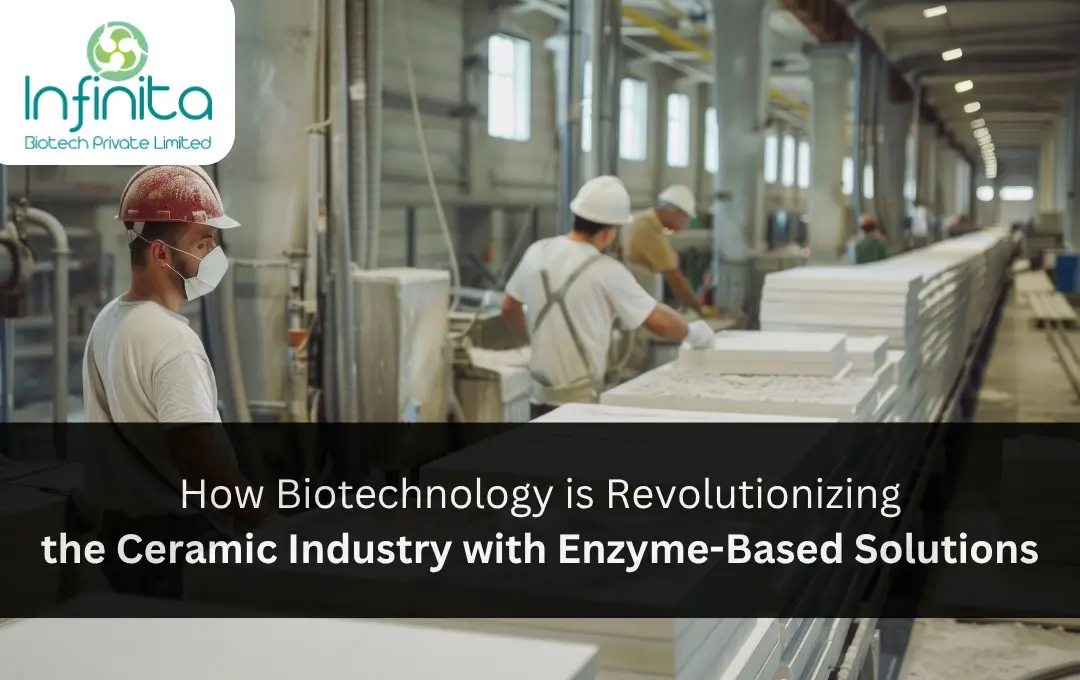The ceramic industry — long known for its reliance on high-temperature processing and mineral-intensive techniques — is undergoing a quiet revolution. This transformation is driven by none other than biotechnology. Enzyme-based innovations are introducing cleaner, more efficient methods to improve production, reduce energy usage, and enhance the quality of ceramic products. As the global demand for sustainable and eco-friendly materials grows, biotechnology is emerging as a key enabler of change in ceramic manufacturing.
Why Ceramics Need Innovation
Ceramics are essential across industries — from tiles and sanitaryware to electronics and advanced engineering materials. Traditional ceramic processing involves high energy consumption, significant raw material use, and chemical-heavy operations that can impact the environment.
With increasing pressure to adopt greener practices, ceramic manufacturers are turning to biotechnology to meet these demands without compromising product quality or performance.
The Role of Biotechnology in Ceramics
Biotechnology introduces biological systems — primarily enzymes and microbes — into the ceramic production process. These bio-based inputs offer multiple advantages over conventional chemicals and mechanical methods.
1. Enzymatic Clay Beneficiation
Certain enzymes can improve the plasticity and workability of clays used in ceramic production. By modifying clay at a microstructural level, biotechnology helps manufacturers reduce the use of additives while achieving better shaping, molding, and surface finish.
2. Reduction in Organic Binders
Biotechnology enables partial or complete replacement of synthetic binders with enzyme-treated alternatives. This not only improves the green strength (pre-fired strength) of ceramics but also reduces toxic emissions during firing.
3. Energy Efficiency During Firing
Enzyme-based pre-treatment of raw materials often leads to better sintering behavior. This can lower the firing temperature, resulting in substantial energy savings — a key benefit in large-scale ceramic plants.
4. Cleaner Surface Treatments
Biotechnological formulations offer natural alternatives to chemical polishing or surface cleaning agents. Enzyme-based cleaners help remove residues without scratching or degrading glazed finishes.
Advantages of Biotechnology in Ceramic Processing
The integration of biotechnology into ceramics offers both environmental and operational benefits:
- Resource Optimization: Improved clay workability means reduced wastage and more efficient raw material usage.
- Lower Carbon Emissions: Reduced energy requirements during firing contribute directly to lower greenhouse gas emissions.
- Improved Surface Finish: Enzymatic cleaning and processing lead to smoother, more refined ceramic surfaces.
- Safer Work Environments: By minimizing exposure to harsh chemicals, biotechnology helps create safer conditions for factory workers.
- Better Product Consistency: Biological treatment enhances the homogeneity of raw mixes, resulting in more consistent product output.
Industrial Applications on the Rise
Several sectors within the ceramic industry are beginning to adopt biotechnology solutions:
- Tile Manufacturers: Enzyme-modified clays offer better strength and surface smoothness.
- Sanitaryware: Improved casting slip formulations for precise mold filling.
- Technical Ceramics: Enhanced raw material properties for high-performance engineering ceramics.
- Tableware and Pottery: Eco-friendly surface treatment and decoration processes.
Leading producers are investing in R&D to develop custom enzyme blends tailored to specific ceramic processes, indicating that this bio-driven trend is here to stay.
Sustainability Through Science
The use of biotechnology in ceramics aligns with the broader push for sustainability in manufacturing. Enzymes are biodegradable, require minimal input energy, and significantly reduce dependency on petroleum-based chemicals. With global regulatory bodies tightening restrictions on emissions and hazardous waste, biotechnology provides a practical path forward.
In addition to ecological advantages, bio-based processing can reduce operating costs over time — making it both a sustainable and economical solution.
Conclusion
As industries across the world look to decarbonize and modernize, biotechnology is proving to be a powerful catalyst — and the ceramic industry is no exception. From improving raw material properties to reducing energy use and enhancing surface finishes, enzyme-based solutions are redefining how ceramics are made.
For manufacturers seeking innovation with responsibility, the integration of biotechnology offers a smarter, cleaner future — one that doesn’t compromise on performance, profitability, or the planet.

